Weekly birding round-up: 10 - 16 Oct
While Storm Callum brought strong winds and torrential rain for the west of the country this past week, things were moving up the east coast. It began to feel, cautiously, a little bit like a traditional autumn week at long last. But where was the eye-catching October mega that stops everyone dead in their tracks?
Ah. There it was. And this week, it had company.
There have been a couple of close calls. One was reported, midwinter, in Co.Dublin in 2002; and another was claimed from Northumberland in September 2007. But the wait went on for our first definitive White-rumped Swift.
Southerlies, in October… what could that bring us? It wasn’t wholly surprising that there was a probable Pallid Swift reported from Kent this week with a couple of further possibilities too, but this is the time of year when we can dare to dream bigger still… When news of a Pacific Swift at Hornsea (East Yorkshire) broke, late in the afternoon of Sunday 14th, that felt like the sort of thing we might have in mind. East Yorkshire, incidentally, has four accepted records of that species – all from the months of June and July.
Indeed, all seven of our British Pacific Swifts have turned up in the May-July window. This bird had clearly not read the script… Half an hour after that breaking news, observers on site at Hornsea were getting to grips with the bird in front of them and, as better views and clinching photographs ensued, the bird’s identity was rapidly reappraised, and resolved – this was, unequivocally, Britain’s first ever White-rumped Swift.
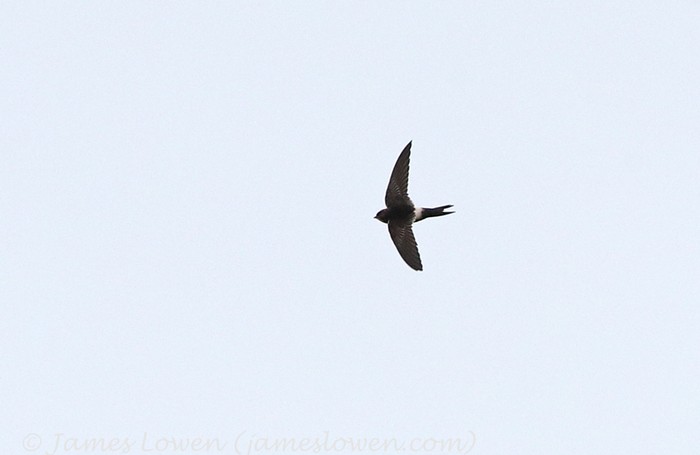
James Lowen’s gripping photos, released back of camera onto Twitter, threatened to do a Kim Kardashian and break the internet…
Absolute ffffing Nora. Hornsea now. pic.twitter.com/cN80bZ9P6e
— James Lowen (@JLowenWildlife) October 14, 2018
(There should probably be a name for a bird like this – a first for Britain, found in the last traces of daylight on a late Sunday afternoon, and inconveniently distant for all but those within ready striking distance of the site in question. ‘Blocker’ just doesn’t seem Schadenfreude-y enough for those fortunate enough to have seen it).
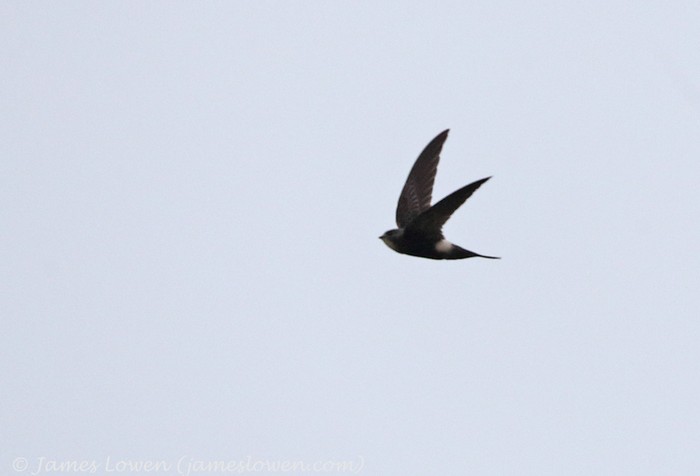
This, then… this is what autumn is all about – an absolute screamer of a rarity, out of the blue. Turns out southerlies are the new easterlies and, unless anything utterly outrageous turns up in the next month or so, this was surely bird of the year…
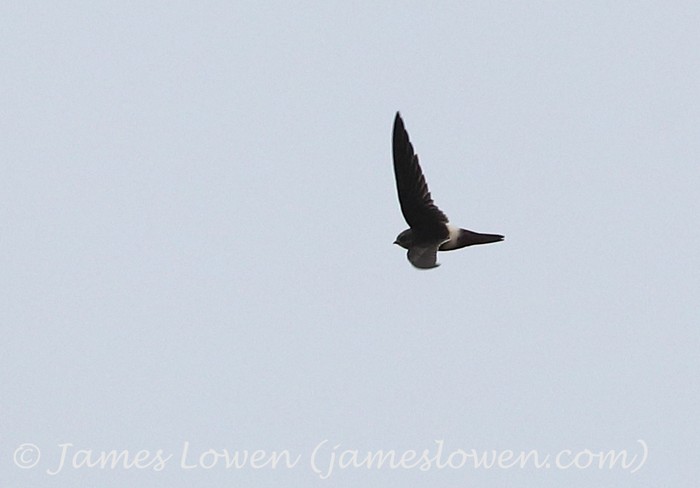
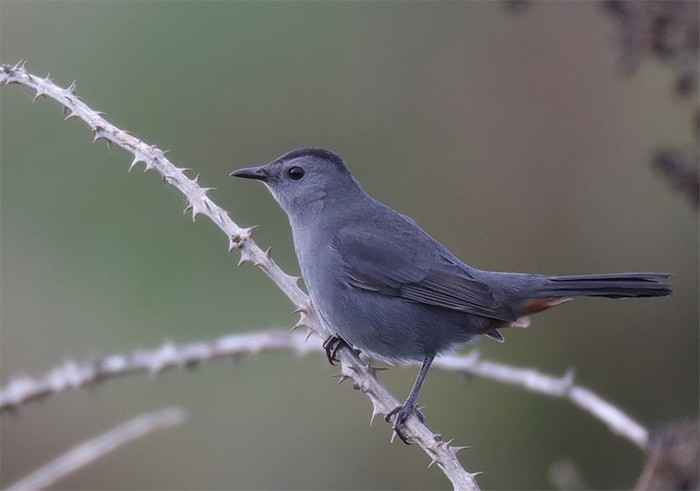
Halloween might be a fortnight away yet, but Cornwall was raising some ghosts of twitches past this week in the form of Britain’s second Grey Catbird found near Land’s End at Treeve Moor late in the afternoon of 15th.
Now, there’s a species to conjure with. Ask many active twitchers their British experience of Grey Catbird, and I’d warrant a good number of them have a tale to tell… Though perhaps none quite as strange as that of the bird found on Jersey in October 1975 – this unfortunate individual was trapped by the finder underneath a paint tray, propped up with a stick and baited with breadcrumbs and, once correctly identified, was destined to spend the next three years of its life incarcerated in an aviary on the island.
But that was a Grey Catbird in the grey political area that’s a British crown dependency – our first, unequivocally British example was the bird found on Anglesey by Ken Croft on 4th October 2001. This example famously ended up incarcerated in the heart of an almighty gorse thicket, much to the frustration of the gathering crowd of birders it had drawn to north Wales.
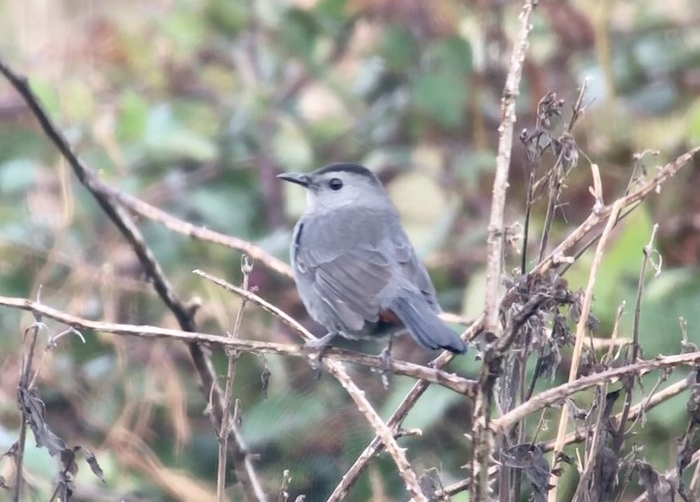
And there the mild controversy lies – according to the BBRC report for 2001 and the finder’s account in British Birds, the bird remained there on 4th-5th October – but according to some birders present on Anglesey on Saturday 6th, it was there at the start of the weekend too. Other birders present that day were equally adamant that they saw no Grey Catbird. Some even mentioned male Blackcap... Fair to say then that this, Britain’s first record and Anglesey’s first ever American passerine of any description, was a divisive bird at the time – and is still capable of raising hackles to this day.
Back in the present, our latest bird was considerably more obliging than the all-too-brief White-rumped Swift, and had done the decent thing – it was still present on 16th, allowing those not within a stone’s throw of it on 15th the chance to mobilise and head to the furthest reaches of the south-west for some welcome catharsis. Autumn 2018 had finally delivered the goods, and in some considerable style.
Maybe this, after all, was bird of the year…
Talk about feast or famine. We go weeks without a decent new American passerine and then a slew of them come along at once…
(And I’d just like to mention that it was here in these columns only the other day that we dared to invoke the great year of 1995, and suggested this year might be another similarly good one for American passerines over here. It’s certainly shaping up well so far).
In any week that didn’t feature a Grey Catbird I’d be trumpeting the finding of a Scarlet Tanager on Cape Clear (Co.Cork) on 16th as one of the autumn’s big moments. And, to be fair, it’s still right up there. It is a tanager, after all – but then again, Co.Cork enjoyed one only last year on Mizen Head and, of the previous four accepted Irish records, all but one of them have been in Co.Cork. So, perhaps, while Scarlet Tanager remains an achingly rare bird in a British and Irish context, it’s not quite such a big deal for Co.Cork birders.
Ah, who am I kidding? You’d need a heart of stone not to feel the old pulse quickening for a tanager on this side of the pond. What a terrific find and, with eyes to the Azores for inspiration, I wonder what’s going to be turned up on our shores in the coming few days…
Nowhere near in the class of either of those preceding American passerines, we can’t however ignore the brief Bobolink that flew over Trenoweth on St Mary’s (Scilly) in the late afternoon of 15th. While it appeared to land, subsequent searches couldn’t refind it.
While Scilly dominates British sightings of this species, with 14 accepted records to date, the last British
This must, surely, be prominent on the radar of Irish birders at the best of times, and in particular in a week such as this. Time to get checking those weedy fields…
Whoever said you can’t have your cake and eat it clearly didn’t have quality, rare Phylloscopus warblers in mind. After all, in what’s generally been a rather quiet autumn so far, whoever would have thought we’d realistically land both Green Warbler and Two-barred Greenish Warbler within the space of just 10 days?
Well, them’s the breaks… as, while this week was drawing to a close, reports of a Two-barred Greenish Warbler at Holkham Pines (Norfolk) on 16th emerged at first tentatively and, latterly, more confidently.
While we’ve only had six previous British records, including the bird last year in Dorset, this latest bird would mean that we’ve enjoyed a Two-barred Greenish Warbler for the past three consecutive years. Hard to believe that they’re going to become – whisper it - annual, but the stats don’t lie. With just six prior records, however, there’s plenty of the country that’s yet to add one to their county list, so they’ll be popular for a while to come yet.
(Sorry, Norfolk, but a second record this year is just plain greedy! Share ‘em out… please…)
It’s been a terrific year, all told, for rare terns. We started with the wandering American Royal Tern in West Sussex and Dorset in June; and the Sooty Tern that teased and then settled on the Ythan estuary in Aberdeenshire in late July and early August will have been the bird of the year for many, and justifiably so – charismatic and rare in equal measure.
And let’s not forget the popular American Black Terns that lingered at Dungeness (Kent) and Portstewart (Co.Derry) in August and September. Nice… but a wandering tern from the tropics takes a lot of beating.
In September, on two occasions one of either Sooty or Bridled Tern were seen – off Selsey Bill (West Sussex) on 16th, and Whitburn CP (Co.Durham) on 23rd. On both occasions, my heart went out to the observers in question – how immensely frustrating must it be to see a clearly rare tern passing by, just too far out to definitively identify it?
There were no such problems apparent for the lucky observer in question this week at Castlegregory (Co.Kerry) on 12th when a Bridled Tern flew past, heading north, in the early afternoon. Unsurprisingly, following such a seawatching sighting, there were no further sightings of it from that vantage point that day.
Black-eared Wheatear is one of those species that I have a gut feeling is getting rarer in Britain than it once was and, indeed, a glance at the statistics shows that this hunch is borne out by the facts – where once it was virtually an annual fixture through the 1980s and early 1990s and even in multiple numbers per annum on some occasions, it has latterly become considerably scarcer.
Orcadian birders, therefore, may not have been overly optimistic that Orkney would be seeing its first record any time soon. Past records show a distinctly southerly bias and even Shetland, with six of the 49 accepted British records post-1950, hasn’t had a Black-eared Wheatear since the long-staying bird on Fair Isle from 17th July – 8th September 1997.
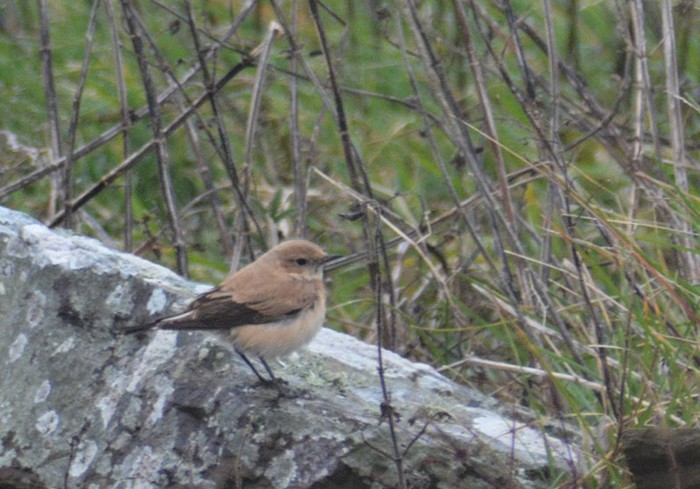
The latter bird was the eastern subspecies melanoleuca, but with the southerly airflows that wafted a certain swift as far north as East Yorkshire this week, it was perhaps not entirely surprising that the Black-eared Wheatear found on North Ronaldsay on 11th was of the western subspecies, hispanica. Some authorities treat the two subspecies as separate species in their own right but, for now at least, the IOC are calling them both Black-eared Wheatear. North Ron’s birders, meanwhile, are calling this the first of its kind for Orkney and hence, the island too.
Speaking of taxonomic minefields, one of the more recent splits to grace the British list comes in the form of Eastern Yellow Wagtail. Shetland has already enjoyed one strong candidate this autumn, up on Unst, and this week it was the turn of Scilly to get in on the action.
A first-winter bird found on Tresco on 10th-14th remained labelled a possible until a sound recording was obtained, allowing a definitive call for Eastern to be made. This is one of those cryptic species that are sent to challenge us – in the absence of a sound recording of a harsh flight call, or a DNA sample, it’s nigh-impossible to have certainty in the field when confronted with a good-looking grey and white candidate.
We’ve precious few accepted British records to date, though one suspects they’ve been overlooked in the past and will be a semi-regular fixture in coming years. A further possible bird was present on St Mary’s (Scilly) on 15th-16th.
You could be forgiven for thinking this was one of the better weeks of the year for seabirds, with a surprising amount of variety given the relatively advanced point in the autumn in which we find ourselves. We’ll kick off with an albatross sp seen from Malin Head (Co.Donegal) on 10th – believed to be most likely a Black-browed, it sadly eluded a definitive identification.
Further uncertainty came from Cornish waters on 12th, with a possible Wilson’s Petrel noted off Mousehole. A definite Wilson’s was seen from here the following day; with it or another also seen off Porthgwarra on 13th too.
Leach’s Petrels meanwhile numbered some 25 birds nationwide this week, with a peak count of five birds on 13th from Mousehole and Porthgwarra alike.
Some 175 Great Shearwaters were entirely confined to the waters off Cornwall and Scilly once more, with the exception of a bird reported from Frinton-on-Sea (Essex) on 13th. The lion’s share of the weekly tally came from the Scillonian on 10th, with 150 birds logged.
Numbers of Balearic Shearwaters were up again this week, with around 200 birds in all seen this week – peak count coming, predictably on a good day for seawatching in Cornwall, from The Lizard on 13th where 55 birds were tallied.
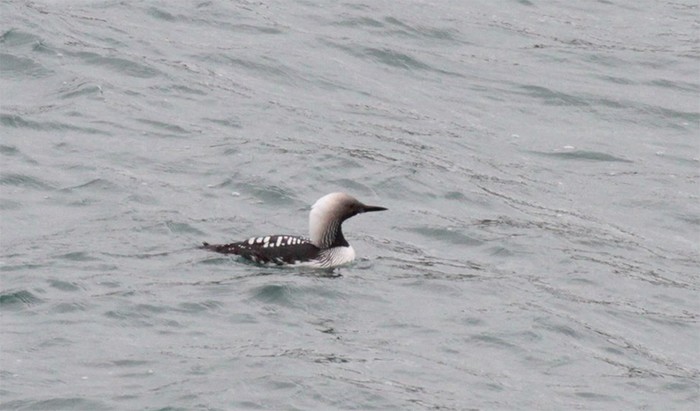
Meanwhile, Pomarine Skuas were very much down on the previous week’s showing – barely a quarter of their former numbers were seen, being just 30 birds noted nationwide. For the most part these were single birds; duos were seen on 11th off Black Head (Co.Clare) and Coliemore (Co.Dublin), and on 15th from Swalecliffe (Kent); and three birds were seen on 14th off Whitburn CP (Co.Durham).
Four Long-tailed Skuas came in the form of singletons seen from Cornwall on 13th at Coverack and Rame Head; one on 14th from Holland Haven CP (Essex); and a final individual on 15th off Cley (Norfolk).
In Ireland, the returning adult Pacific Diver was still present at Crookhaven (Co.Cork) on 11th.
And finally, a possible mandtii Mandt’s Black Guillemot was noted on 14th at Westport (Co.Mayo).
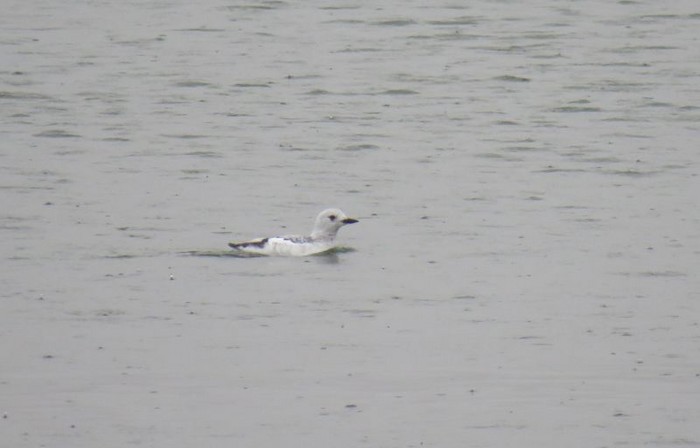
Numbers of Cattle Egrets seemed to hold fairly static this week across Britain (and to a much lesser extent, Ireland), with around 200 birds once more reported across the region. The southwest of England was still the hotspot, with peak counts coming from the Somerset Levels where, Shapwick Heath NNR on 12th a frankly incredible roost of 97 birds was logged.
In the happy absence of any White Storks purporting to be wild this week, we move swiftly on to Glossy Ibises - birds remained at Rutland Water (Leicestershire) on 10th-16th; Fremington Quay (Devon) still on 11th-15th; and Steart WWT (Somerset) on 11th-13th. Co.Wexford, meanwhile, accounted for sightings of a bird from Lady’s Island Lake on 12th-14th and nearby Tacumshin on 13th.

Away from Norfolk, sightings of Common Cranes this week were dominated by Cambridgeshire where, following a single bird at Huntingdon on 10th, a flock of 31 were logged at Ouse Washes RSPB on 14th. South Yorkshire claimed two birds at Hatfield Moors on 11th and Thorne Moors NNR on 13th; and three passed over Lowestoft (Suffolk) on 12th.
The adult and juvenile Spotted Crakes were still to be seen this week in Hertfordshire at Wilstone reservoir on 10th-13th, with one bird still present on 14th-16th. Elsewhere, one remained at Chew Valley Lake (Somerset) on 10th-16th, and further probable birds were noted on Scilly on St Mary’s on 12th and 14th, and Tresco on 14th. (Memories of the 1991 Sora on St Mary’s will doubtless still be in some birders’ minds – this masqueraded as a Spotted Crake for a while before its true identity was realised). On 15th the bird at Oare Marshes KWT (Kent) was seen once more.
A Corncrake was inadvertently flushed at Treverva (Cornwall) on 16th.
More hints of the months to come came this week in the form of just a little more volume if not variety amongst our rare and scarce honkers and quackers. Last week’s intermediate morph Snow Goose remained present at Findhorn Bay (Moray) on 10th-13th while a blue morph bird was present on 16th at Udale Bay RSPB (Highland).
An interior Todd’s Canada Goose was present on Islay (Argyll & Bute) on 15th.
The drake deglandi American White-winged Scoter was still to be found off Musselburgh Lagoons on 10th-14th, sharing his stretch of Lothian coastline with a drake Surf Scoter on 10th-16th also. On 15th-16th a juvenile Surf Scoter was found off Tean (Scilly), while a drake was seen on 15th from Ballyvaughan (Co.Clare).
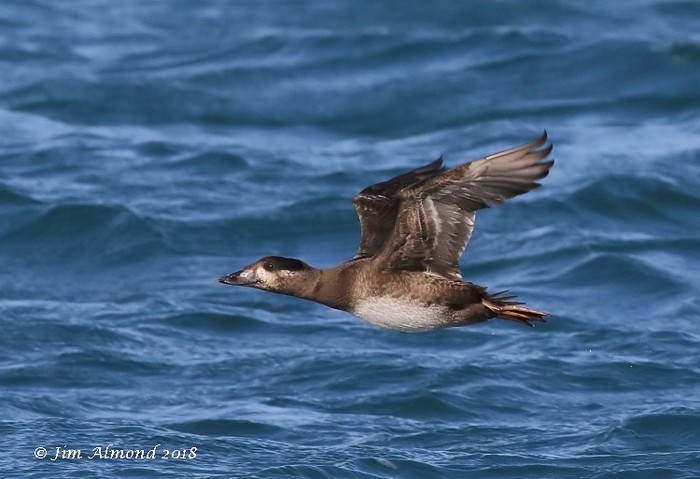
At Rutland Water (Leicestershire) the drake American Wigeon remained on 10th still; further birds were recorded at Loch Eye (Highland) on 13th-16th and Kilcoole (Co.Wicklow) on 14th, with a further bird (or possibly a hybrid) noted on Orkney at Firth on 13th.
The Blue-winged Teal was again seen at Trabeg (Co.Kerry) on 10th.
Give us a month or so and we’ll be knee-deep in Green-winged Teals - but for now, birds were seen this week at Wick (Highland) on 11th-16th and North Plain RSPB (Cumbria) on 11th, with a further possible bird seen briefly on 14th on Moray’s Lossie estuary.
The juvenile Ferruginous Duck at Minsmere RSPB (Suffolk) remained there on 10th-16th while, in Forth, the drake was still at Skinflats Lagoons on 10th-14th.
A female Ring-necked Duck was found in Shetland near Boddam on 12th-16th; elsewhere in Scotland, one was present on St John’s Loch (Highland) on 13th-14th. Wales claimed a drake on 14th-15th at Llyn Caer-Euni (Gwynedd). On 16th three were found in Cornwall at Drift reservoir. In Ireland, a female was noted on 14th on Inch Island (CO.Donegal).

We conclude then with our honorary wildfowl member – the Pied-billed Grebe still roaming around Loch of Spiggie in Shetland this week on 10th-16th. One wonders where it got to all summer…
We’ll kick off the shorebirds section of proceedings this week with the return to the news of the Stilt Sandpiper in Co.Donegal at Inch Island Lake – last reported from there in the afternoon of 27th September, there it was again in the afternoon of 14th – sharing the site with a female Ring-necked Duck for good measure.
In fact, where sandpipers of all kinds were concerned this week, it was Ireland that dominated the news on pretty much every front…
Two juvenile Semipalmated Sandpipers were found on 13th – at Lady’s Island Lake (Co.Wexford) and Ballycotton (Co.Cork) respectively.
Tacumshin (Co.Wexford) accounted for the week’s first White-rumped Sandpiper on 12th-15th; another was present on 13th-15th on Cape Clear (Co.Cork), while two birds were seen on Inishmore (Co.Galway) on 14th and, on 15th, further sightings came from Inch Island (Co.Donegal), Termoncarragh Lough (Co.Mayo) and Myroe Levels (Co.Derry) still; the Inch Island bird remained on 16th. Away from Ireland a juvenile lobbed around Grutness and the Pool of Virkie on Shetland on 14th; and in Cornwall, one was briefly present on the Hayle estuary before succumbing to an opportunistic Sparrowhawk.
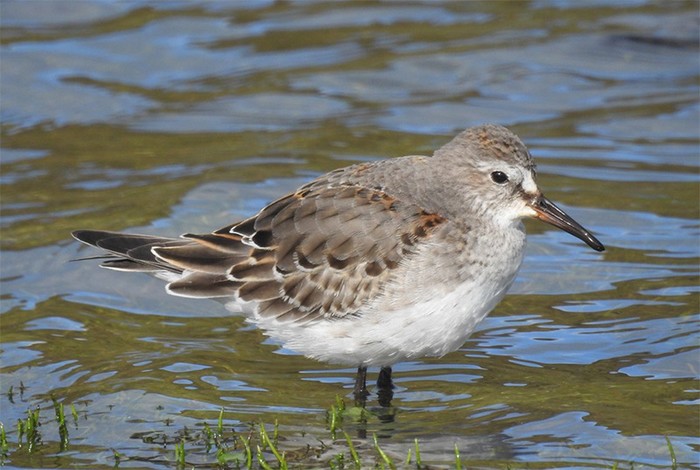
No such terminal endings were reported for the juvenile Baird’s Sandpiper, still present in Moray at Findhorn Bay on 10th-11th. A further sighting came from Co.Donegal on 15th-16th on Inch Island.
Pectoral Sandpipers were fading from sight this week, with a handful of settled birds accounting for most of our sightings - two remained in Norfolk at Buckenham on 10th-13th, with one bird still present there on 14th; one was still at The Vyne Water Meadows (Hampshire) on 10th-14th; and in Ireland one was still present at The Gearagh (Co.Cork) on 11th-12th. A further Irish sighting came from Rahasane Turlough (Co.Galway) on 14th; and two birds were noted on South Uist (Western Isles) on 13th.
Sticking with Ireland for just a moment longer, the Buff-breasted Sandpiper remained on Loop Head (Co.Clare) on 10th-15th.
And so to England, for a new Spotted Sandpiper, a juvenile showing well at Marske (Cleveland) on 12th-14th. A further bird was found on 15th-16th at Jarrow (Co.Durham).
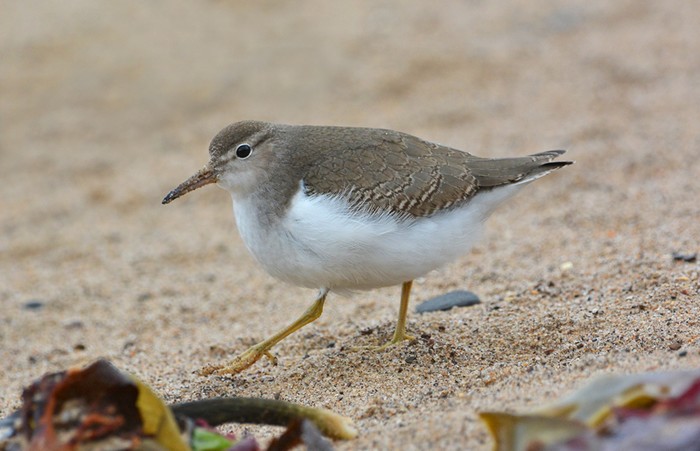
On 15th-16th a Temminck’s Stint was found at Baston & Langtoft GPs (Lincolnshire).
No new American Golden Plovers were found this week – instead we have just a trio of lingering birds: an adult still on Loop Head (Co.Clare) on 10th-15th; one still on Sanday (Orkney) on 11th; and the juvenile again on South Uist (Western Isles) on 11th-12th.
Our settled recent quartet of Lesser Yellowlegs were still all available this week – these being birds once more at Hollesley Marshes RSPB (Suffolk) on 10th-16th; at Radipole Lake and Lodmoor RSPBs again on 11th-16th; at Devoran Quay (Cornwall) still on 10th-14th; and in the Western Isles again on North Uist on 11th-14th.
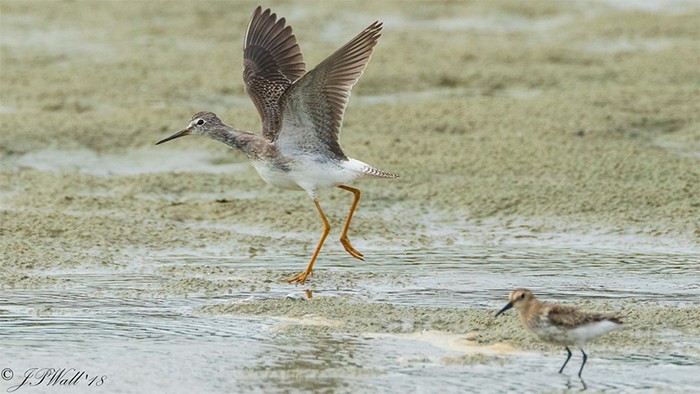
A late-moving Dotterel was at Flamborough (East Yorkshire) on 16th.
In Lincolnshire, the adult Long-billed Dowitcher was still hanging out at Frampton Marsh RSPB on 10th-13th; the same site also hosted a Red-necked Phalarope on 13th-16th.
Sightings of Grey Phalaropes crept into low double figures again this week with around 25 birds in all noted nationwide, including the popular settled individual in South Yorkshire at Old Moor RSPB on 10th-14th still, and a peak count of four birds seen from St Mary’s (Scilly) on 14th.

An adult Bonaparte’s Gull heads up our weekly rummage through the ripe pickings of the scarce and rare gulls and terns – this was a bird found on 14th at Low Newton-by-the-Sea (Northumberland).
A possible Laughing Gull at Woodbridge (Suffolk) on 14th also failed to turn into anything more concrete.
Single Sabine’s Gulls were seen on 15th from Musselburgh Lagoons (Lothian) and off the Scillonian.
Dungeness (Kent) accounts for our first Glaucous Gull this week, in the form of a bird noted off there on 13th, while the second-winter was again seen on 16th at Llandulas (Conwy), and a further bird was reported on 16th over Wigan (Greater Manchester).
Just three Iceland Gulls were seen nationwide throughout the week, being birds on 11th at Mudeford Quay (Dorset) and Wick of Aith (Shetland), and one on Islay (Argyll & Bute) on 12th.
In Ireland, the adult Forster’s Tern was once more to be found off Soldier’s Point (Co.Louth) on 10th-14th.
Our week began with the juvenile female Pallid Harrier still at Therfield (Hertfordshire) on 10th, but she was not seen there thereafter.
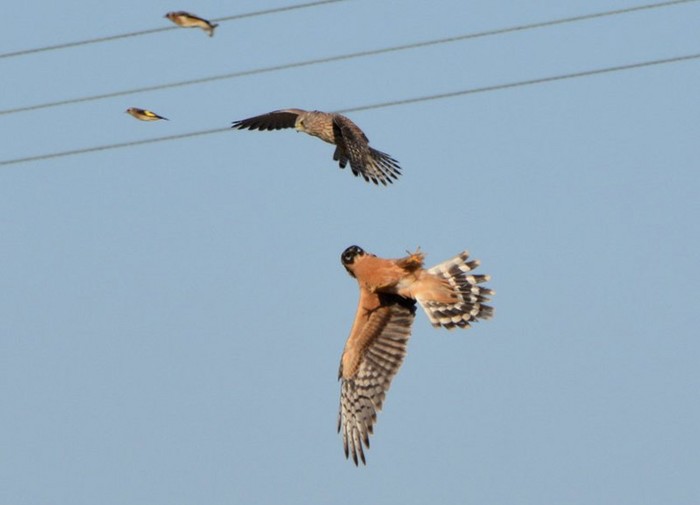
A Black Kite was reported from London over Harold Hill on 10th.
In Kent, on 12th, a juvenile Red-footed Falcon was seen from Sandwich Bay.
While just two Honey Buzzards were reported this week, on 10th at Kingsthorpe (Northamptonshire) and on 15th at Long Drag (Cleveland), it was a different story for Rough-legged Buzzards with a small surge of the latter witnessed as the week progressed. On 10th birds were seen in Suffolk at Pipps Ford and in Lincolnshire at Castle Lytham; on 11th one was seen from Hartlepool Headland (Cleveland); on 12th another was noted at Tophill Low YWT (East Yorkshire); and on 13th-15th one was in Highland at Loch Calder.
Last but by no means least, out on St Kilda (Western Isles), the female Snowy Owl was once more noted on 11th, while the immature male showed well in unseasonable sunshine on Shetland’s Fetlar again on 10th; and in Wales, the previous week’s bird remainedin Gwynedd at Llyn Trawsfynydd on 10th-11th.
Starting with the warblers, Shetland’s second River Warbler of the autumn showed intermittently on 14th in a garden at Wester Quarff.
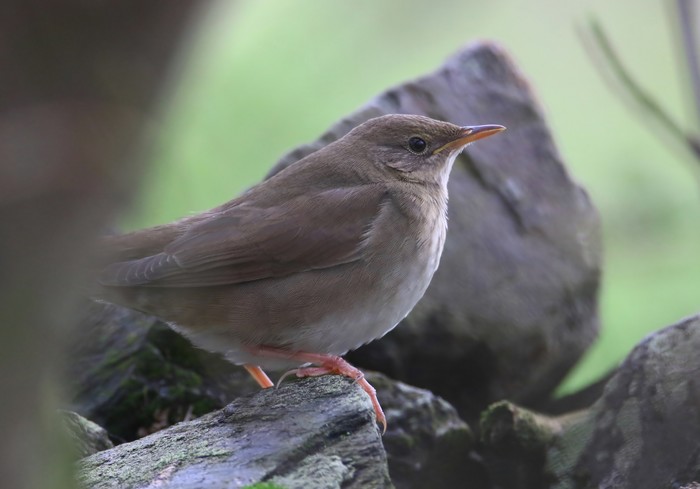
Just down the road from there, a more confiding Booted Warbler was settled in a small stretch of coastal territory at Sumburgh on 12th-14th. A further probable bird was at Sandwich Bay (Kent) on 15th.
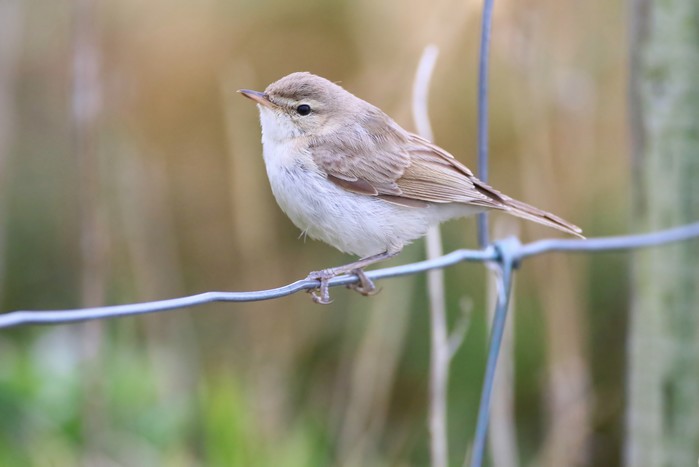
Birders in Shetland were treated to a further particularly charismatic and showy warbler at the weekend in the form of a Pallas’s Warbler in the sunken garden at Grutness on 12th-14th. Further Pallas’s were seen this week on 11th on Holy Island (Northumberland); in Norfolk on 12th at Walsey Hills and 14th at East Hills and Hemsby, on 15th at Wells Wood, and on 16th at Happisburgh and Winterton; on 13th-14th in Shetland at Vementry; on 15th at Gunton Warren and Minsmere RSPB (Suffolk); and on 16th at Foreness Point (Kent).
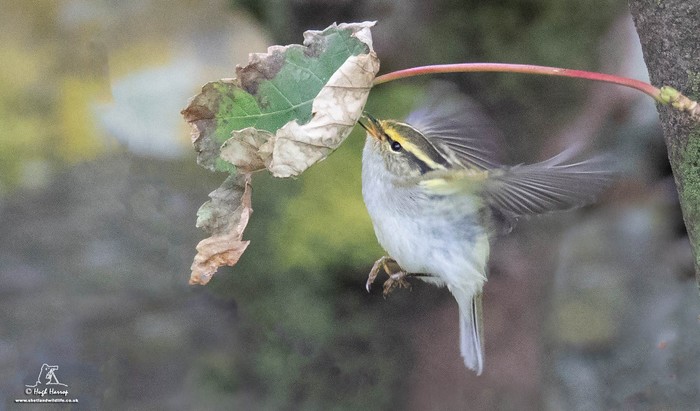
A Greenish Warbler was present on St Agnes (Scilly) on 10th-14th, with another seen on 11th at Ballynacarriga (Co.Cork); a probable bird was at Kilminning (Fife) on 15th, and further possible was seen at Gunton Warren (Suffolk) on 15th also. An Arctic Warbler was at Gibraltar Point NNR (Lincolnshire) on 11th also.
While numbers of Yellow-browed Warblers soared, with around 1,000 recorded this week, a single possible Hume’s Warbler was noted on 11th at Spurn (East Yorkshire).
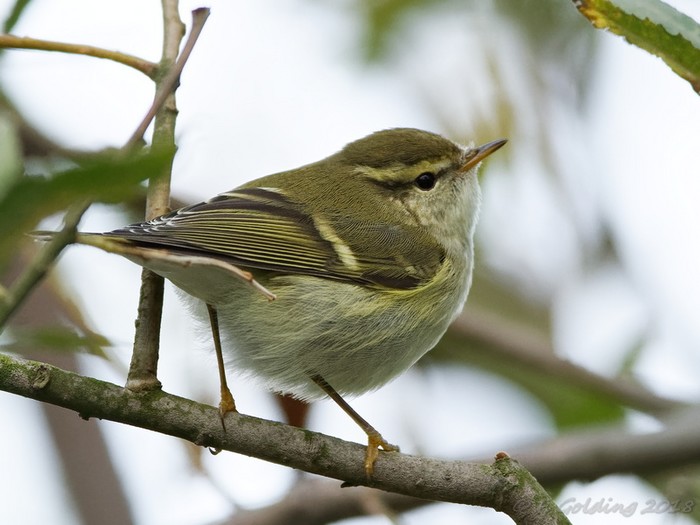
Norfolk notched up another fairly startling recent absentee from the news – a Dusky Warbler at Eccles on 14th, followed by another on 16th at Trimingham.
On 11th-15th, a male Subalpine Warbler sp on Cape Clear (Co.Cork) was remaining of indeterminate species with some suggestions it might show characteristics of a Moltoni’s. Latterly, it was heard to call, sounding like Western Subalpine Warbler - and, as DNA has been obtained, we will presumably in due course learn if that in-the-field determination was correct.
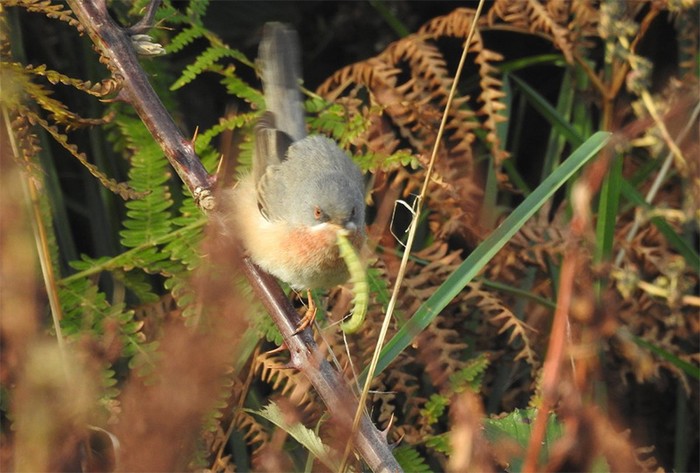
Melodious Warblers, meanwhile, were found at Pendeen (Cornwall) on 11th; on Dursey Island (Co.Cork) on 12th; in Co.Galway at Slyne Head on 13th-15th; and on St Mary’s (Scilly) on 14th.
Finally for the warblers, some 25 Barred Warblers were noted this week – mostly single birds, but with two on Barra (Western Isles) on 10th and three present on Unst (Shetland) on 14th.
Some of the biggest passerine news this week came from Fair Isle (Shetland) (at last) when, on 13th, a White’s Thrush was found. The famous isle has been quiet lately and, by Fair Isle’s admittedly high standards, a White’s Thrush is still fairly small beer. It’s a foolish birder who writes it off though, and I have a feeling Fair Isle may deliver an absolute belter sooner rather than later.
On Yell (Shetland) the Swainson’s Thrush continued to show well until 14th.
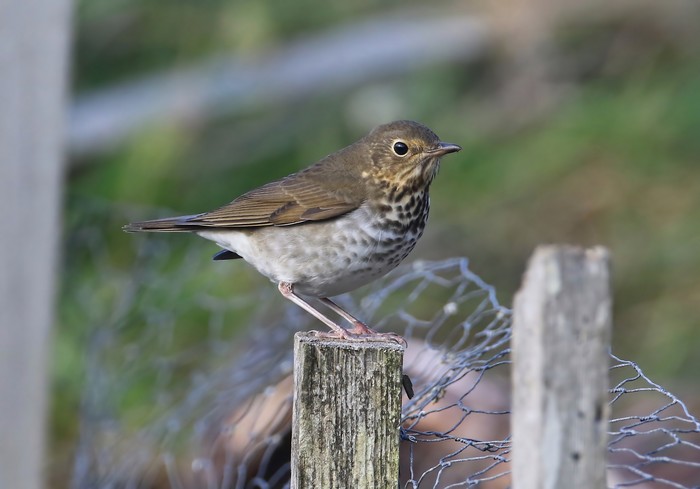
Once a great rarity but now reduced to being merely a damn brilliant autumn find for the fortunate few, an elusive Red-flanked Bluetail was found in the late afternoon of 15th at Holkham Pines (Norfolk).
Conversely a shadow of their once much more numerous selves, a handful of Bluethroats were seen this week, mainly in Shetland where one on Whalsay on 13th-14th was my best garden bird of the autumn so far, and was followed by further birds on Unst on 15th and at Sumburgh on 16th; and these were preceded by individuals on St Agnes (Scilly) on 11th-12th and North Ronaldsay (Orkney) on 12th-14th.
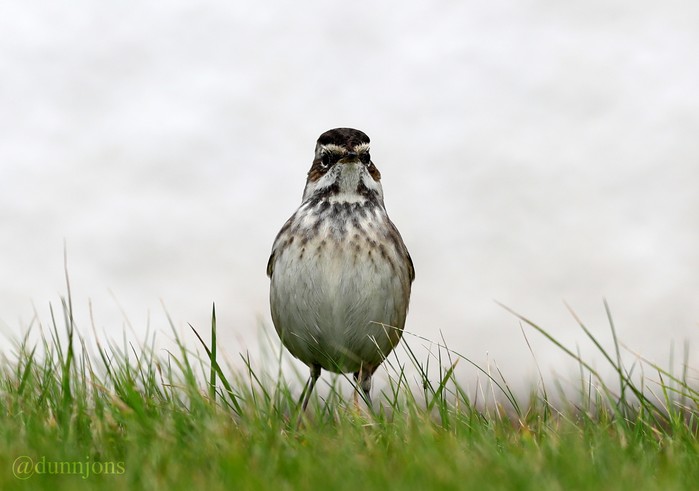
An Eastern Stonechat sp, either Siberian or Stejneger’s, was present on Bardsey (Gwynedd) on 16th.p>
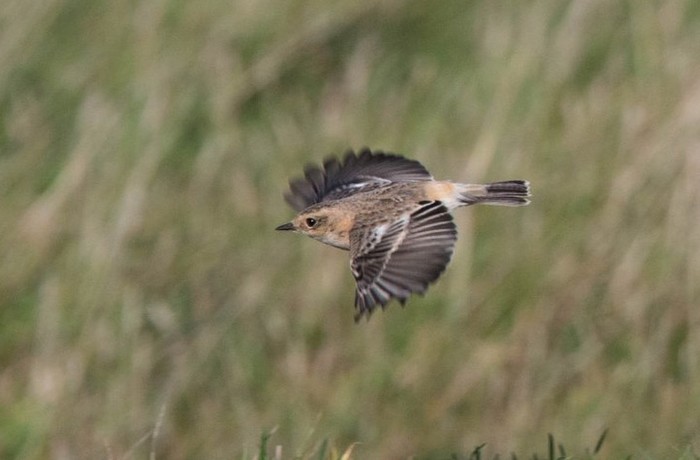
Traditionally associated with Fair Isle, this week it was Barra’s (Western Isles) turn to host a Pechora Pipit, with one present there on 13th-15th. This is just the second record for the Western Isles, following a bird seen there ten years ago on North Uist on 4th-5th October 2008.
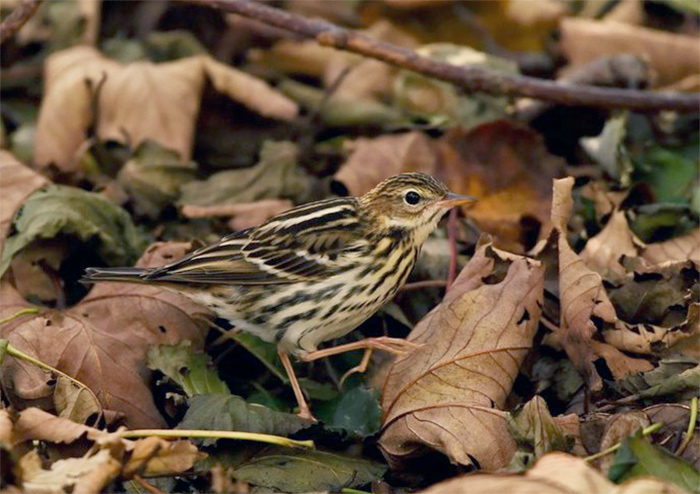
Red-throated Pipits were on the move this week – on 10th, birds passed over Colwyn Bay (Conwy) and St Martin’s (Scilly); a further possible bird was heard on Scilly on St Mary’s on 10th-11th; back in Wales, one was at Llanon (Ceredigion) on 10th; and on 11th one was identified from a sound recording made at Knott End (Lancashire).
There were a slew of Olive-backed Pipits also this week – at least one was kicking around the Kilnsea and Spurn area on 11th-16th, with two birds recorded at Spurn on the 16th; on 11th a possible was over St Mary’s (Scilly), while that day two were on the Isle of May (Fife) with one remaining until 13th; on 13th one was present on Fair Isle (Shetland) with others on the Shetland mainland at Collafirth and in East Yorkshire at Bempton Cliffs RSPB; on 13th-14th a bird was on Yell (Shetland); and on 14th a probable was at North Gare (Cleveland). On 16th a new bird was found on Flamborough (East Yorkshire).
Bryher (Scilly) meanwhile continued to play host to the settled Tawny Pipit on 10th-14th still. Richard’s Pipits were reported in good numbers, with almost 30 birds in all seen and heard. While most of those sightings involved single birds, duos were logged on 10th at Polgigga (Cornwall) and Horsey (Norfolk).
On Shetland the Citrine Wagtail was once more seen on Bressay on 13th.
Two Short-toed Larks were found this week – one in Shetland at Loch of Hillwell on 13th and one down in Cornwall at Sennen on 14th-15th.
A Penduline Tit was at Nanjizal (Cornwall) on 15th.
The Bee-eater at Haltwhistle (Northumberland) remained there still on 10th; thereafter one was seen in Clyde at Crawford on 12th-15th.
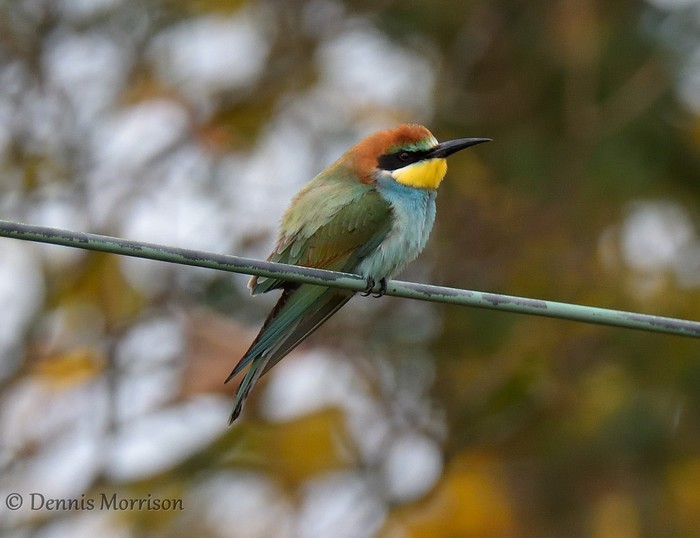
Uncertainties plagued this week’s sightings of Hoopoe - a probable was reported from Greenwich Park (London) on 11th, with another reported that day from Colonsay (Argyll & Bute). On 15th a further report came of a bird on Anglesey at Traeth Lligwy.
Wrynecks meanwhile continued to trickle through, albeit their numbers are dwindling now – ten were seen this week. Birds were settled at Dungeness (Kent) on 10th-14th; Polgigga (Cornwall) on 10th-11th and again on 15th-16th; and on Scilly on St Agnes on 11th-14th and St Mary’s on 11th-15th. Elsewhere one day birds were seen on 10th at Jockey Shield (Cumbria), on Tresco (Scilly), and at Porthgwarra and St Ives (Cornwall); on 13th on Mizen Head (Co.Cork); and on 16th on The Lizard (Cornwall).
An Alpine Swift was found in Co.Wexford on 13th at Greenore Point; while on 13th a probable Pallid Swift ay Kingsgate (Kent) was accompanied in the news by two further possible birds, at Church Norton (West Sussex) and on Holy Island (Northumberland).
Kent also provided both of the week’s Red-rumped Swallows: on 12th one was at Foreness Point while, on 13th, one was seen at Kingsgate.
Nine Red-breasted Flycatchers were better than preceding week’s showings, but were perhaps indicative of the lack of volume of eastern migrant bird traffic we were experiencing. Birds were recorded at Mizen Head (Co.Cork) still on 10th; on 10th-11th at Waxham (Norfolk); on 11th-16th at Kilbaha (Co.Clare); on 12th at Hartlepool Headland (Cleveland) and on North Ronaldsay (Orkney), the latter bird being a cracking male; and on 14th, widely scattered birds were seen on Whalsay (Shetland), Tresco (Scilly), Easter Muchalls (Aberdeenshire) and Mains of Usan (Angus), the latter bird remaining until 16th. On 16th another ws found on Scilly on St Mary’s.
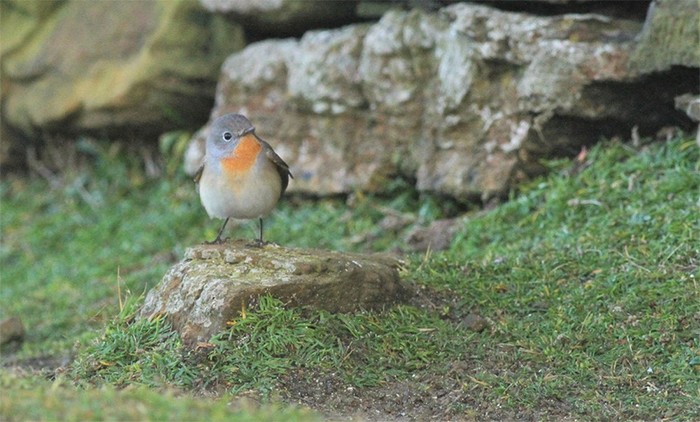
A possible Brown Shrike was reported, belatedly, from Predannack Head (Cornwall) on 14th.
An elusive Woodchat Shrike was found at Sumburgh (Shetland) on 11th.
The probable first-winter Daurian Shrike was still on Barra (Western Isles) on 10th, with another first-winter bird showing well in Devon at Thurlestone on 10th-16th.
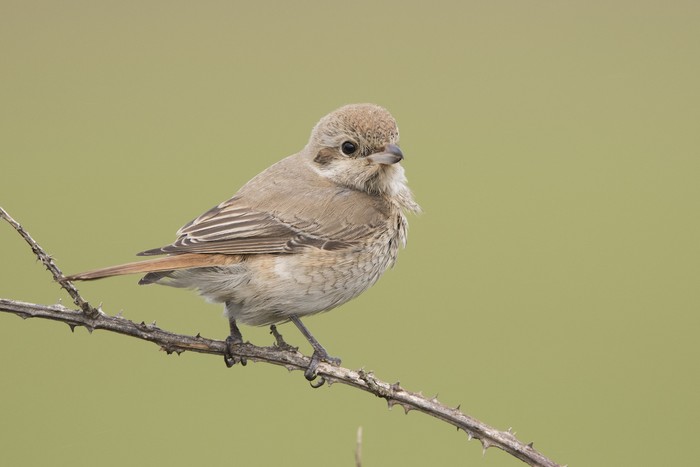
Red-backed Shrikes meanwhile remained in short supply – birds were lingering on St Agnes (Scilly) still on 10th-16th and on Tiree (Argyll & Bute) again on 10th while, back on Scilly, one was seen on St Mary’s on 14th-16th. On 15th one was found on Unst (Shetland).
If they were few and far between, the same couldn’t be said for Great Grey Shrikes as the latter had a bit of a moment this week, with around 20 in all noted nationwide – as we’d have expected, spread down the east coast from Shetland in the north to Kent in the south.
We did well too for Rose-coloured Starlings - a juvenile at Porthgwarra (Cornwall) on 10th-11th and again on 16th was followed by an adult in Norfolk at New Costessey on 10th-16th, one on The Lizard (Cornwall) on 10th-14th, and another in Hereford (Herefordshire) on 11th. Settled birds remained at Barns Ness (Lothian) on 10th and on St Martin’s (Scilly) still on 10th-16th; at Spurn (East Yorkshire) still on 10th-13th; and at Timperley (Greater Manchester) until 16th.
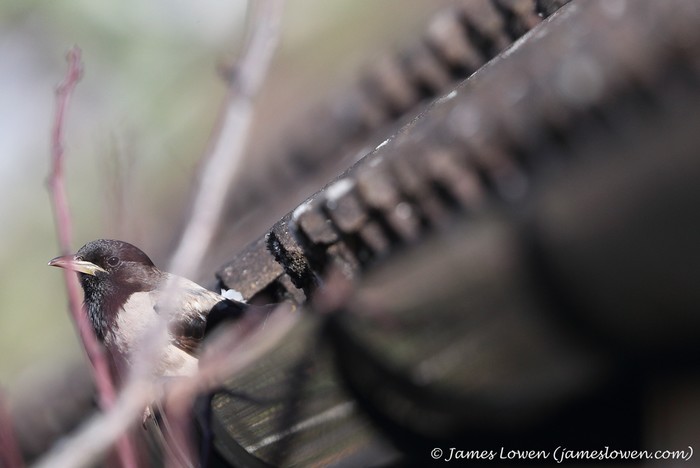
The Pied Crow remained in East Yorkshire at Flamborough until 16th.
We’ll not let around 20 Common Rosefinches recorded nationwide delay us overly before getting onto the lingering quality out on Foula (Shetland) – but first, there’s the small matter of some Little Buntings to get through: single birds were seen this week at Nanjizal (Cornwall) on 10th-11th and nearby Polgigga on 16th; on St Agnes (Scilly) on 10th-11th; at Sumburgh (Shetland) on 11th-13th; at Brake (Shetland) on 11th and Toab (Shetland) on 14th; on 14th at Beal Point (Northumberland) and at Balcomie (Fife); on 15th at Blakeney Point (Norfolk) and on Dursey Island (Co.Cork); and on 16th at Loop Head (Co.Clare) and Portland (Dorset). Two birds were present on North Ronaldsay (Orkney) on 11th.
And so to Foula, where we finish this week with both lingering Nearctic sparrows still present into another recording period – the White-throated Sparrow remaining there on 10th, and the considerably rarer White-crowned Sparrow still present until 14th.
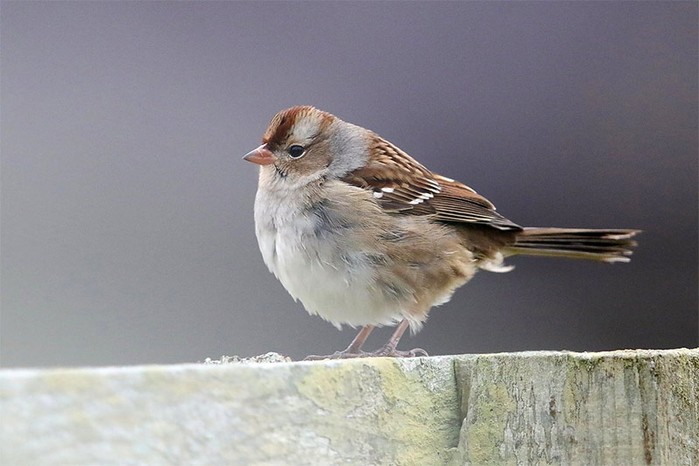
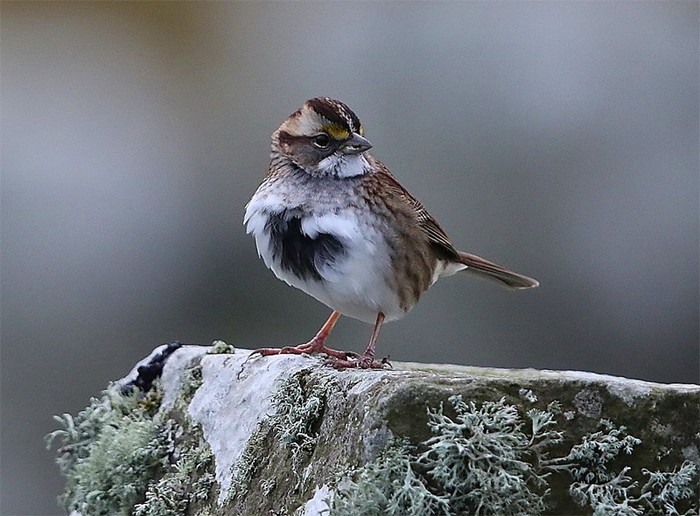
I mentioned last week that the Azores were beginning to turn their engines over – and this week, they were fairly speeding. We’re used to Corvo dominating the Azorean news (and more of that, shortly), but this week the winner’s laurels must go to nearby Flores – for here, on 13th-14th, was the Western Palearctic’s first ever Western Kingbird. Complete, on 13th, with a Yellow-billed Cuckoo supporting cast; and followed on 15th by Scarlet Tanager, Red-eyed Vireo and Northern Waterthrush.
Western Kingbird, Tyrannus verticalis photographed at Ponta Delgada, Flores by Thjis Valkenburg - the 1st record for Azores and Western Palearctic pic.twitter.com/VuxdIpvazK
— Tarsiger (@TarsigerTeam) October 13, 2018
Before we head to Corvo news, we’d best get Pico out of the way – on 13th it hosted the pleasingly symmetrical duo of an American Buff-bellied Pipit and a Buff-breasted Sandpiper.
And then, with no further ado, it’s off we go to Corvo, theatre of dreams. It got to the point where it was hard to keep track of what was on there as the week progressed… An American Redstart on 10th was joined by a second bird present on 11th, with one remaining until 14th and, on 16th, two birds present there once more; two Red-eyed Vireos on 11th had risen to seven by 16th; an Indigo Bunting on 12th was two birds by 16th; a Baltimore Oriole was seen on 11th-14th; on 13th the island was graced by White-throated Sparrow and Dickcissel.
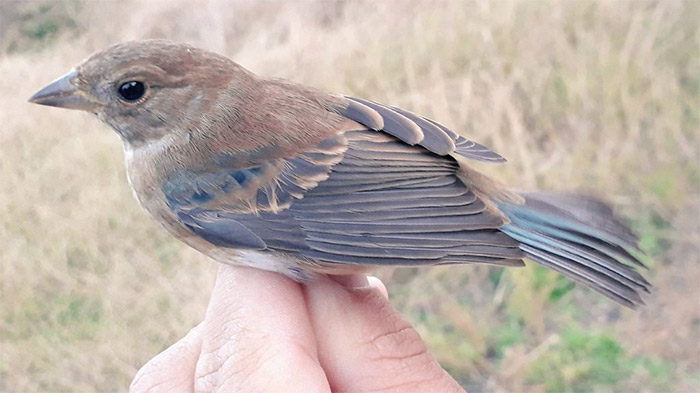
And stuff just kept on coming. A Wilson’s Warbler was present on 12th-16th, with Northern Parula and Black-throated Green Warbler also on 15th, the latter still present on 16th but joined then by two further birds; 15th also delivered Grey-cheeked and Swainson’s Thrushes, with both still present on 16th and joined, for good measure, by Wood Thrush and Ovenbird.
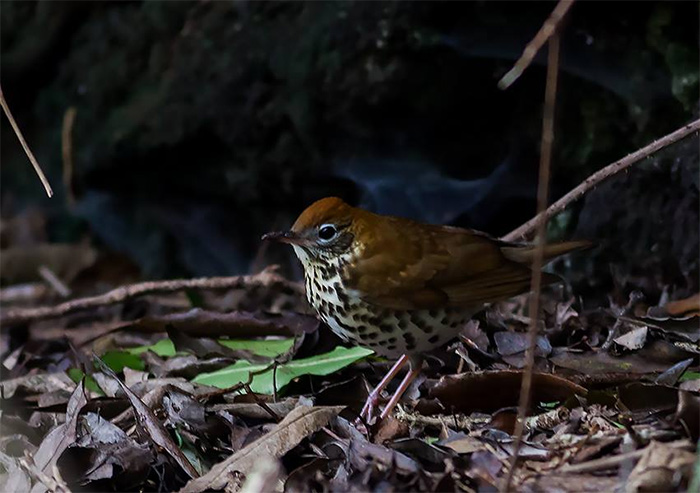
Had enough yet? No, me neither. Corvo wrapped up 15th with Scarlet Tanager and Rose-breasted Grosbeak, with both still present on 16th – though by then they were up to two Rose-breasted Grosbeaks, and by way of a small bonus, joined by a Blackpoll Warbler. News kept coming on 16th with a vireo double bill – both Philadelphia and Yellow-throated Vireo were found that day. Not a bad fall at all.
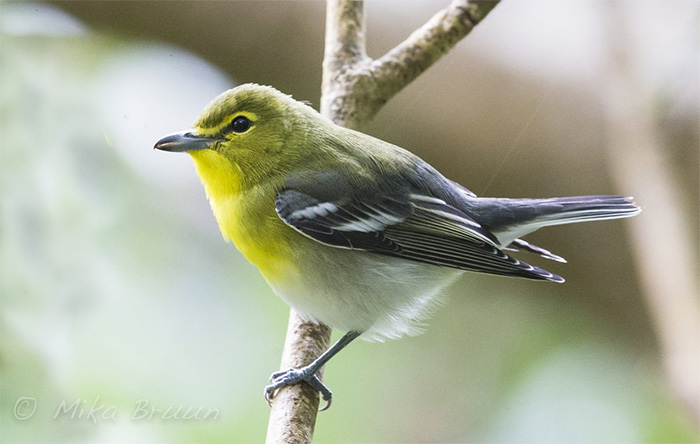
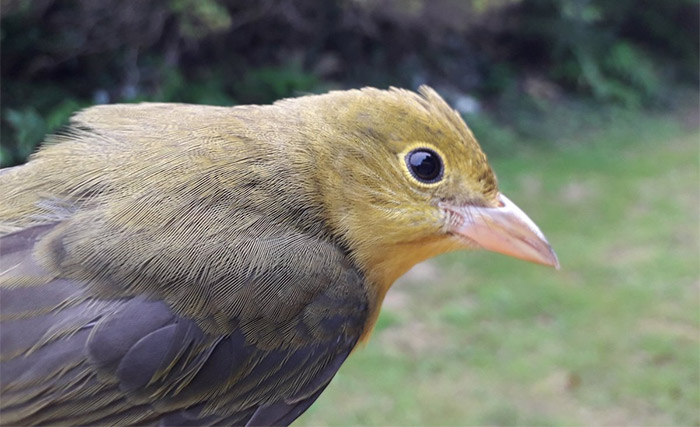
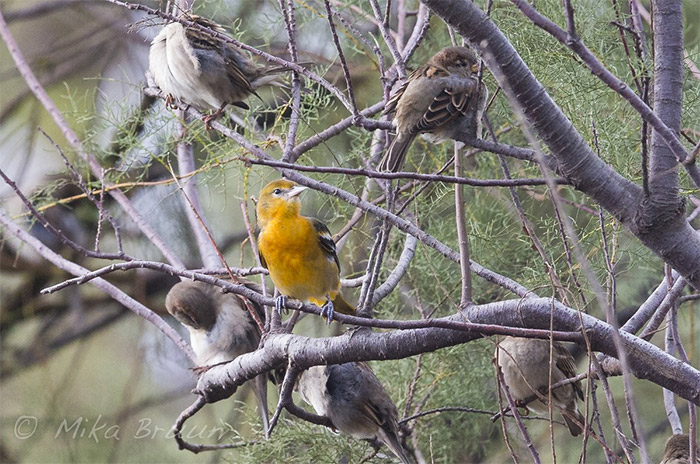
The rest of the Western Palearctic news is going to seem very dull indeed by comparison, though try telling that to Icelandic birders who enjoyed a very lost Lanceolated Warbler indeed at Fagranes on 13th. Elsewhere in Iceland the Hermit Thrush was still at Hallskot on 12th.
In Finland a Black Vulture was seen at Rihimaki on 10th; Sweden, meanwhile, claimed a Black-browed Albatross off Kagabacken on 13th.
A Calandra Lark was found in Poland in Lower Silesia on 15th.
A Black-shouldered Kite was seen at Kester (Belgium) on 14th; and in France, an Eastern Olivaceous Warbler was on La Ile de Yeu on 11th.
Once again this week I’m absolutely spoiled for choice as to what to confidently but entirely wishful-thinkingly predict for the coming days. I’ve said it already this week, but we write off Fair Isle at our peril and the coming week is absolutely THE week for the so far this autumn rather quiet island to have one of its moments…
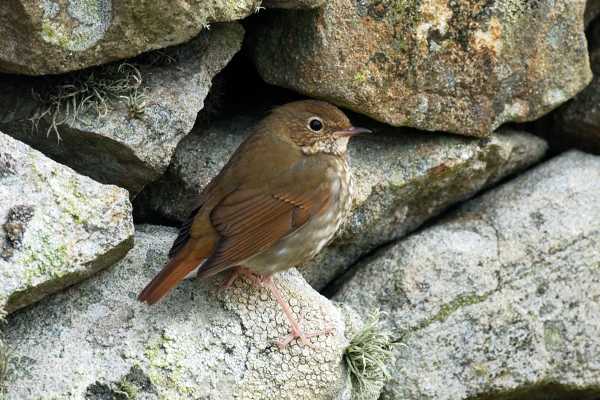
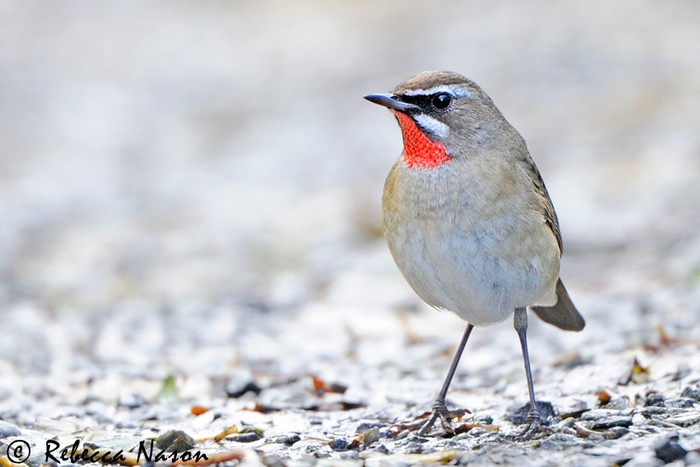
Which, on the basis of past records for the coming week, could include the likes of Rufous-tailed Robin or Siberian Rubythroat.
Yet Fair Isle doesn’t have a monopoly on the late October monster… It’s yet to have an Eastern Crowned Warbler, for example, but who can forget the Trow Quarry bird in Co.Durham on 22nd-24th October 2009? There’ve been others too, but who’d say no to another?
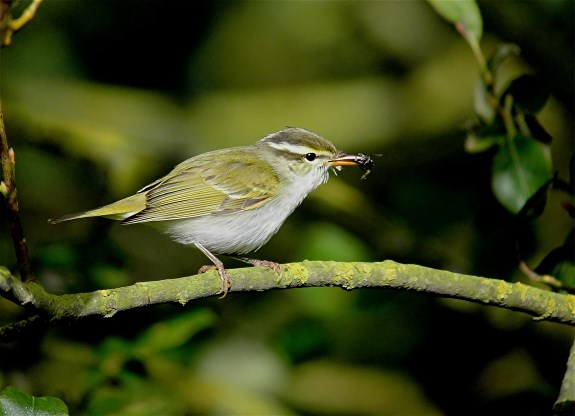
And then there are the really crazy leaf warblers – the dead on arrival Pale-legged Leaf Warbler picked up on St Agnes (Scilly) on 21st October 2016, and the Pale-legged or Sakhalin Leaf Warbler on Portland (Dorset) on 22nd October 2012. Whenever the next one of those turns up all hell will surely break loose.
So far, so eastern… but with recent arrivals in Cornwall and Co.Cork firmly in mind, and half an eye to the Azores, there’d be no complaints if somebody finds Britain’s first, and long-anticipated, Black-throated Green Warbler. Or even another Northern Parula - they’re getting harder to come by these days.
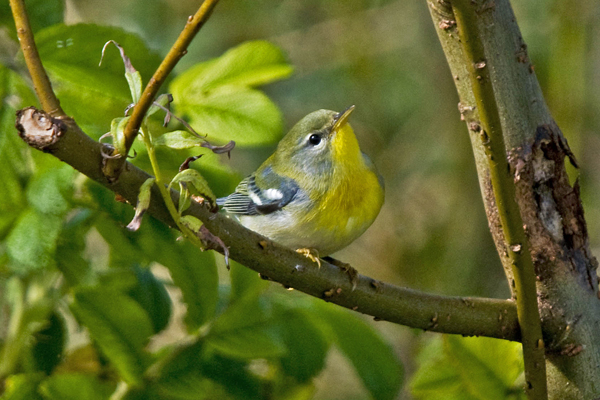
Jon Dunn
17 October 2018
Share this story






